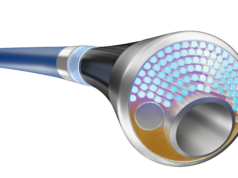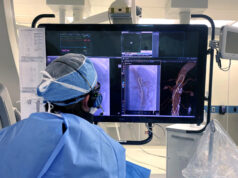 Royal Philips today announced the US Food and Drug Administration (FDA) has granted Breakthrough Device designation for a laser-assisted inferior vena cava (IVC) filter removal device. The proposed device is intended for ablating tissue to remove an IVC filter when previous methods of removal have failed.
Royal Philips today announced the US Food and Drug Administration (FDA) has granted Breakthrough Device designation for a laser-assisted inferior vena cava (IVC) filter removal device. The proposed device is intended for ablating tissue to remove an IVC filter when previous methods of removal have failed.
The failure rate for IVC filter removal is high and limited options for removal exist if the filter has become difficult to remove. Advanced retrieval tools and techniques are required if the IVC filter becomes embedded in the vasculature. Physicians have very few tools to remove the filter when this happens and there are no FDA-approved devices for this type of advanced removal.
Two independent and prospective clinical studies have demonstrated that laser-assisted retrieval was 96–99% effective with a major adverse event rate of 0.7–2%, a Philips press release reports.
“Laser-assisted filter retrieval may be a critical tool for the safe retrieval of filters with extended implantation times,” said Kush R Desai, associate professor of Radiology, Surgery, and Medicine, and director of Deep Venous Interventions at Northwestern University Feinberg School of Medicine (Chicago, USA). “Breakthrough Device designation reflects the potential impact that this technology could have on countless patients where this technology can be applied to safely retrieve filters by an expert physician, thereby reducing their risk of significant filter-related complications.”
“There is a clear need for an innovative device to help physicians more safely perform advanced IVC filter removal and I believe that the Philips excimer laser sheath may greatly enhance the options available to succeed in filter retrieval,” said Atul Gupta, chief medical officer for Image Guided Therapy at Philips and also a practicing interventional radiologist in Philadelphia, USA. “Breakthrough Device designation is an important step for a medical innovation such as this one to help fill an unmet need in patient care.”












